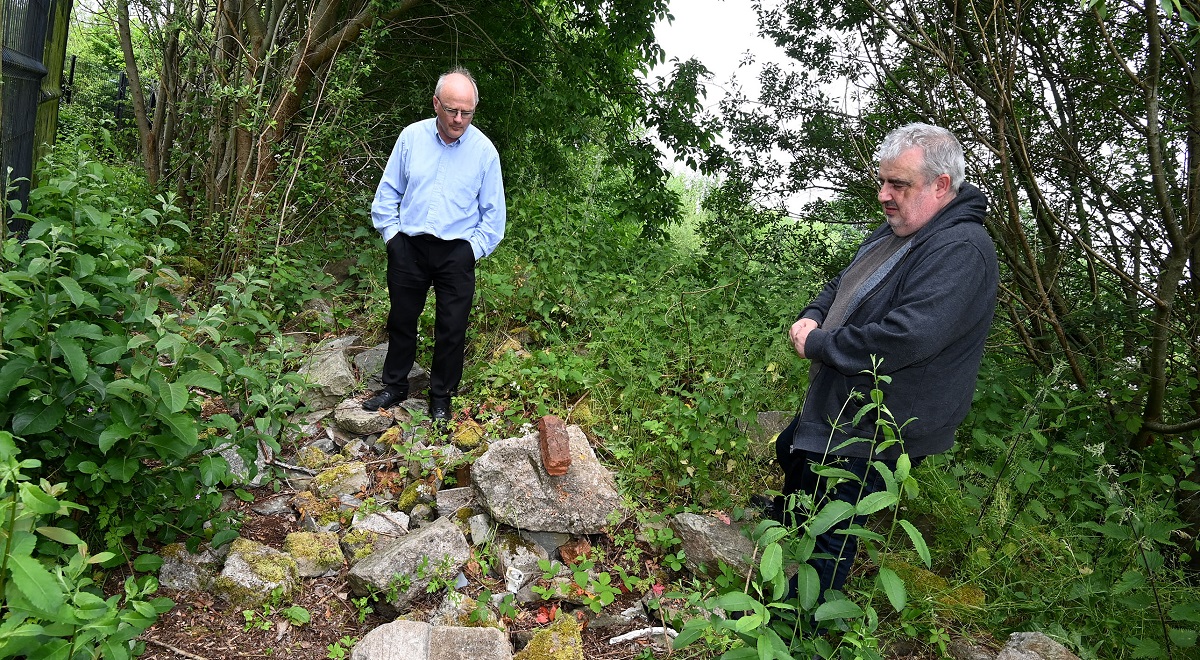PAUPERS buried in unmarked graves at the site of a former workhouse in Omagh may finally get their own memorial amid fresh moves to recognise burial sites in the town.
Local historians claim that a large number of bodies could still be buried on former workhouse grounds on Woodside Avenue, located close to the former police station on Omagh’s Gortin Road.
On Tuesday night, Sinn Féin’s Barry McElduff asked Fermanagh and Omagh District Council (FODC) to ‘appropriately mark’ burial grounds for the historic workhouse.
At a meeting of the Regeneration and Community commitee, the Omagh town councillor said, “I propose that this council works closely with the Western Health Trust, Omagh Heritage Forum and other relevant bodies to ensure that the site of the Omagh Workhouse is appropriately marked to acknowledge the memory of all those men, women and children who sought shelter within its walls and all those who died and were buried there.
“I walked through the site, and the clay on my shoes is the clay of that site.
“I wanted to see it for myself, and see the poignancy of it that hundreds, possibly thousands, passed through there and died.”
“The vision I have for this is something like a memorial garden; a reflection space, flowers, a plaque or a seat.
“Today, I was talking to the Western Trust to clarify what land is under their control and if this might be a project they deliver,” Cllr McElduff said.
His proposal was seconded by Cllr Catherine Kelly, and no objections were made, securing the workhouse’s formal recognition on the council’s agenda.
The plan set forth by Barry McElduff is supported by Omagh Heritage Forum, which believes that ‘up to 2,000’ bodies are still under the historical burial grounds.
Ken Collins, a local historian and member of the Heritage Forum, said, “In Omagh, there is an estimated 2,000 buried within at least three burial sites on the grounds.
“The need for more burial sites suggests that, at one time, the main burial ground was overfilling, though it is difficult to estimate the exact number of deaths, as some were not recorded, and other bodies would be taken by families to bury elsewhere.”
Omagh workhouse, built in August 1841, was originally designed to hold 800 inmates, but due to the famine, additions were made to hold 1,000. And, in the end, the workhouse was forced to fit 1,100 people due to high demand. It was closed in the 1930s, and subsequently demolished in the mid 1960s. However, the infirmary and fever ward would be transformed into the Omagh General Hospital, and would operate until November 1999.
Two major archaeological digs at the site occurred between 1998 and 2009 revealed up to 79 bodies that were removed, and a further 12 bodies left in the grounds, but it is believed that there are many more left untouched on the site.
Omagh Heritage Forum chair, Vincent Brogan, said, “We believe it is important that the community have the opportunity to mark this site, which was so significant in times past, and we call on the council to work with us to erect a fitting memorial.”







